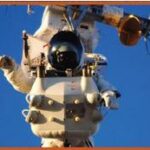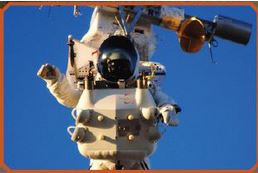Space Products & Innovation
Don’t Panic! Handheld Electronic Guide helps Tired Tourists
Satellites, cellphones, and software applications converge to provide a personalized tour guide service for those traveling throughout Europe. Software application creators, such as LatitudeN, are combining a smartphone’s satellite navigation technology with mapping software, imagery, and travel content to provide travelers a personalized tour experience.
Exploring the Edge of Space in a Spacesuit, then Falling Quickly to Earth
People have dreamt of falling from great heights for centuries, but one man, Alan Eustace, fulfilled that terrifying dream in October 2014. His dream: to explore, and then fall from, the edge of space in a spacesuit.
2014 – Space Products and Services Overview


People recognize the benefits of space products and services, using creativity to overcome daily existential challenges and improve lives. The space products and services industry crosses the spectrum of demands and necessities, and continued to grow in 2014, sometimes leveraging the same kind of technology to help with different challenges.
Collaboration Between Space Agencies and the Public
The innovation that characterizes space programs and operations presents a complementary set of opportunities for space agencies: new ideas to solve complicated problems in space (spin-ons) and new ways to adapt space technologies for beneficial products and services for Earth (spinoffs).
Space Products and Services – TSR 2014
2013 – Space Products and Services Overview
Space products and services developed over the course of decades have altered the way people relate to both their planet and each other. Constellations of satellites orbiting the Earth provide a steady stream of information. Detailed forecasts provided by weather satellites as well as environmental monitoring and resource tracking by Earth observation satellites serve to improve the way humanity understands its surroundings.
Using Earth Observation Data to Better Understand Zebra Migrations
Scientists have relied on ground observations, GNSS collars, and satellite images to track animal migration. These tools allow scientists to monitor migration, but not to predict where or when it will happen.
PUMA Tracks Progress of Pulmonary Disease Patient
The Portable Unit for Metabolic Analysis (PUMA) was invented at NASA Glenn Research Center to monitor an astronaut’s oxygen intake and carbon dioxide release, basic factors in astronaut health. This same technology is now being used to track the treatment progress of patients with Chronic Obstructive Pulmonary Disease.
Taking Red Helps with Cholesterol
To reduce the logistical requirements of a crew operating in space, a spacecraft must carry a precise combination of plants and microorganisms that efficiently recover oxygen, potable water, and nutritious food from waste products.
Helping the Lame to Walk: The X1 Exoskeleton
Robonaut 2, a humanoid robot on the ISS, has lent its technology to another NASA project: the X1 robotic exoskeleton. The 26-kilogram (57-pound) X1 attaches to both legs, with controls and a harness extending over the person’s back and shoulders. X1 has been developed by NASA and industry partners for dual purposes.